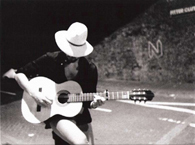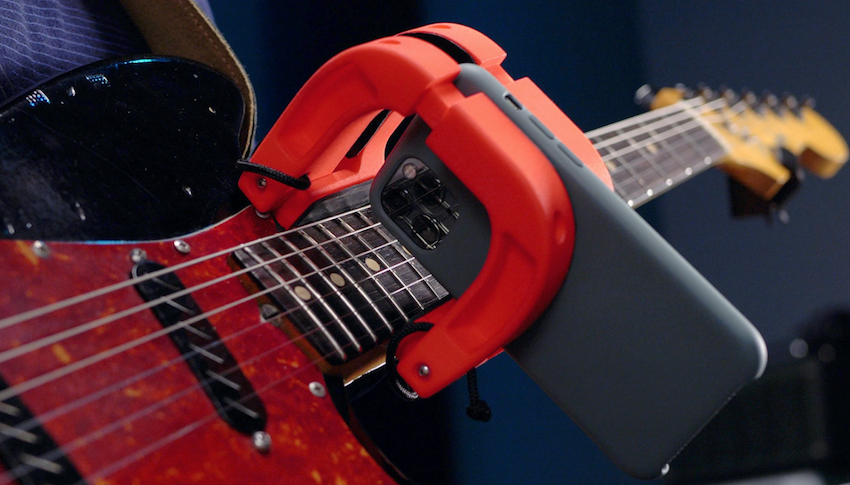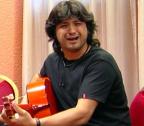Welcome to one of the most active flamenco sites on the Internet. Guests can read most posts but if you want to participate click here to register.
This site is dedicated to the memory of Paco de Lucía, Ron Mitchell, Guy Williams, Linda Elvira, Philip John Lee, Craig Eros, Ben Woods, David Serva and Tom Blackshear who went ahead of us.
We receive 12,200 visitors a month from 200 countries and 1.7 million page impressions a year. To advertise on this site please contact us.
|

|
|
Mechanics/position of the ring finger's (a) last joint
|
You are logged in as Guest
|
|
Users viewing this topic: none
|
|
Login  | |
|

   
mackhomie
Posts: 14
Joined: May 16 2020

|
 Mechanics/position of the ring finge... Mechanics/position of the ring finge...
|
|
|
This doesn't only apply to arpeggios, but I am wondering if folks here have the last joint like normal, which is bent to pluck (like a claw) or if anyone does it the way I am beginning to conclude was likely just bad technique on my part--which is when the finger first touches the string, it begins being straightened as it presses on the string, 'unbending' the joint before the release, which is sort of through the string (instead of upward and toward the palm.)
This is the only finger of mine with this type of attack, and has been accompanied by a 'reverse ramp' on the nail, as it was the outer side of the nail making final string contact, and not the inner side. the finger is essentially jutted out and nearly straight as it plays the note.
I suspect this is just a personal workaround for a problematic nail that I've made work, but is likely 'wrong'. If anyone else does it this way or knows why this approach is subpar, I'd love to hear it. Hopefully the description made some sense.
Ive had issues at times with sharp, brittle sounding notes from that finger, and I believe this is probably the reason.
|
|
|
|
REPORT THIS POST AS INAPPROPRIATE |
Date Nov. 13 2021 19:31:41
 |
|

   
mackhomie
Posts: 14
Joined: May 16 2020

|
 RE: Mechanics/position of the ring f... (in reply to mackhomie) RE: Mechanics/position of the ring f... (in reply to mackhomie)
|
|
|
Thank you for the lengthy response, and thank you Ricardo for the link. watching it now. kinda funny, a bulerias of Jason's (and a couple of the old time flamenco players) were the reason I sold my electric and got into this whole thing nearly twenty years ago.
I've been seeing you guys on here for what feels like that entire time, but that could be my memory playing tricks on me.
Nice to finally interact with you, in any case.
This was an interesting response, as I'd been expecting to hear that it was entirely wrong for some reason that would seem obvious after I heard it. I have tried the ramp on both sides of this particular finger and it seems to dictate which of the two attacks will be required. at the moment, I have it shorter with a normal ramp and am keeping the joint bent, but it nearly feels just a little too long until eventually, it's too short and practicing suffers for a couple weeks.
I'll come back and edit this after I watch the video Ricardo provided, but perhaps one of you guys could answer one more question I've had for ages w/o me cluttering up the main page, which is:. why is a low string action considered so beneficial with respect to rasgueados specifically? with the thumb anchored on the low e, as it often is, couldn't it be almost anywhere since the right hand motion would be the same regardless of whether it was 1cm off the top or 1 foot?
Thanks, fellas.
|
|
|
|
REPORT THIS POST AS INAPPROPRIATE |
Date Nov. 15 2021 2:18:43
 |
|

   
Ricardo
Posts: 14799
Joined: Dec. 14 2004
From: Washington DC

|
 RE: Mechanics/position of the ring f... (in reply to mackhomie) RE: Mechanics/position of the ring f... (in reply to mackhomie)
|
|
|
quote:
why is a low string action considered so beneficial with respect to rasgueados specifically? with the thumb anchored on the low e, as it often is, couldn't it be almost anywhere since the right hand motion would be the same regardless of whether it was 1cm off the top or 1 foot?
When it comes to flamenco guitars there are two “low or high” action set ups. One is the typical one, over the fingerboard. In this sense a guitar with low action set up over the fingerboard is more for rhythm than lead guitar playing. The strings don’t have as much room to vibrate up and down, they slap against the frets. This is good for rhythmic strumming, but not good for loud lyrical melodies. A high action facilitates a wider dynamic range, hard and soft playing will project nicely in other words, with little or no buzzing. Conversely a high action makes loud strummed chords sound like mud, lacking rhythmic definition. A Flamenco player that does solo stuff vs only accompaniment will want a nice middle of the road set up where rasgueados done strong will buzz, but lyrical single notes won’t so much. In the end it is personal how much you can play with in a 2.5-4mm range.
The other action is how the right hand feels near the bridge. When the strings are high up above soundboard (a centimeter or more) doing golpes in conjunction with striking chords is extremely uncomfortable. There can even be a delay between the attacking sounds or a flam. Very low strings on the other hand (7-8mm range) is very comfortable with the guitar responding rhythmically almost immediately with little effort on the right hand energy. So the simple concept of lowering the bridge saddle bone is tricky because if you lower the saddle to comfortable right hand level, it might affect the fingerboard set up such that is becomes too low for lyrical playing. The design set up of a flamenco vs classical guitar is therefore very concerned about the neck angle….the goldilocks target being a low bridge (7mm) but middle of the road action set up over the fingerboard (3mm at 12).
_____________________________
CD's and transcriptions available here:
www.ricardomarlow.com
|
|
|
|
REPORT THIS POST AS INAPPROPRIATE |
Date Nov. 15 2021 12:20:52
 |
|
 New Messages New Messages |
 No New Messages No New Messages |
 Hot Topic w/ New Messages Hot Topic w/ New Messages |
 Hot Topic w/o New Messages Hot Topic w/o New Messages |
 Locked w/ New Messages Locked w/ New Messages |
 Locked w/o New Messages Locked w/o New Messages |
|
 Post New Thread
Post New Thread
 Reply to Message
Reply to Message
 Post New Poll
Post New Poll
 Submit Vote
Submit Vote
 Delete My Own Post
Delete My Own Post
 Delete My Own Thread
Delete My Own Thread
 Rate Posts
Rate Posts
|
|
|
Forum Software powered by ASP Playground Advanced Edition 2.0.5
Copyright © 2000 - 2003 ASPPlayground.NET |
0.109375 secs.
|


 Printable Version
Printable Version





 But what a wonderful feeling it is to let go sometimes..
But what a wonderful feeling it is to let go sometimes.. 





 New Messages
New Messages No New Messages
No New Messages Hot Topic w/ New Messages
Hot Topic w/ New Messages Hot Topic w/o New Messages
Hot Topic w/o New Messages Locked w/ New Messages
Locked w/ New Messages Locked w/o New Messages
Locked w/o New Messages Post New Thread
Post New Thread